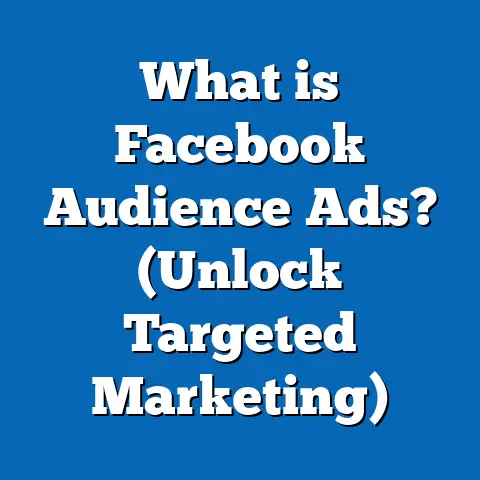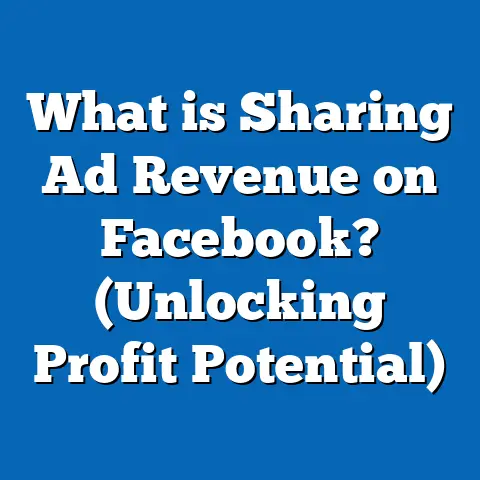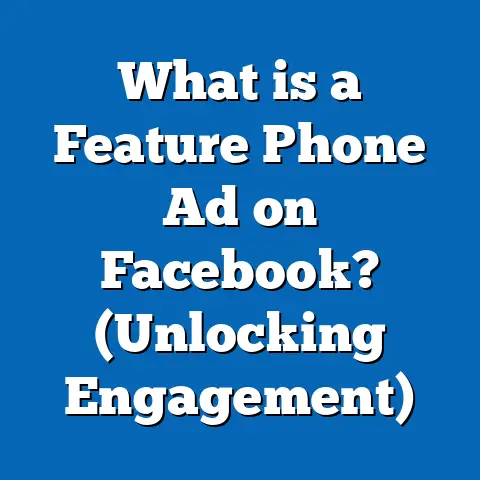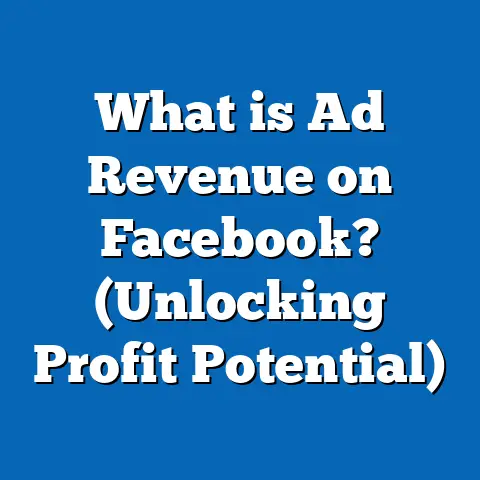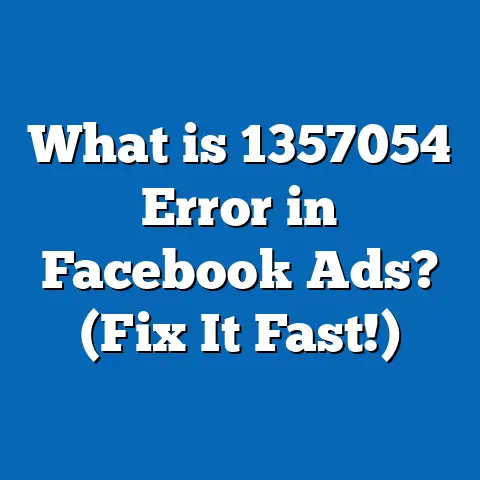What is Auction Overlap in Facebook Ads? (Unlocking Your Reach)
What is Auction Overlap in Facebook Ads? (Unlocking Your Reach)
Introduction: Flooring as Art and Facebook Ads as Craft
Imagine flooring—not just as a functional surface beneath your feet but as a form of art. Each tile, plank, or pattern combines to create a visual experience that transforms a room’s ambiance. Flooring involves careful selection of materials, colors, and layout to achieve harmony and impact. Similarly, Facebook advertising is an intricate craft where every element—from audience targeting to budget allocation—must be carefully planned and executed.
One often-overlooked element in this craft is Auction Overlap. Just like overlapping patterns in flooring can create visual clutter rather than beauty, auction overlap in Facebook ads can reduce your campaign’s effectiveness by causing your own ads to compete against each other. Understanding and managing auction overlap is crucial for unlocking the true potential of your Facebook advertising campaigns.
Understanding Auction Overlap: The Basics
What is Auction Overlap?
Facebook ads operate through an auction system designed to determine which ads get shown to which users at any given time. When multiple advertisers compete for the same audience, an auction takes place where the highest bidding and most relevant ad wins the impression.
Auction Overlap happens when multiple ad sets within the same Facebook ad account target the same or very similar audiences. This means your own ads are competing against each other in the same auction for impressions on the same users.
This internal competition can be costly and inefficient:
- Your ad sets drive up bids against themselves.
- The algorithm shows only one of your ads to a user at a time.
- Your overall reach is constrained because ad impressions are split among your own overlapping ads.
Why Does Auction Overlap Occur?
Overlap occurs because advertisers often create multiple ad sets with broad or similar audience definitions. For example, targeting “Women aged 25-34 interested in fitness” in one ad set and “Lookalike audience based on fitness purchasers” in another might overlap significantly.
Facebook’s algorithm prioritizes showing the single best-performing ad from one advertiser to one user at a time. This prevents multiple ads from the same advertiser appearing simultaneously to avoid spamming the user. However, this also means overlapping ad sets cannibalize each other’s opportunities.
The Facebook Ad Auction Explained
How Facebook’s Auction Works
The auction is not just about the highest bid. Facebook considers three main factors:
- Bid: The maximum amount you are willing to pay.
- Estimated Action Rates: How likely users are to take the desired action (click, purchase).
- Ad Quality and Relevance: Based on user feedback and engagement.
The formula Facebook uses can be summarized as: Total Value=Bid×Estimated Action Rate+Ad Quality Score\text{Total Value} = \text{Bid} \times \text{Estimated Action Rate} + \text{Ad Quality Score}
The ad with the highest total value wins the auction.
How Auction Overlap Disrupts This Process
When you have multiple ad sets targeting overlapping audiences:
- Your ads compete internally.
- Internal competition raises the effective bid needed.
- Facebook picks only one ad set per user per auction.
- Other overlapping ads lose impressions even if their bids are high.
Impact of Auction Overlap on Campaign Performance
Increased Costs and Decreased Efficiency
Internal competition inflates costs by forcing your ad sets to outbid each other. This leads to:
- Higher Cost Per Click (CPC)
- Higher Cost Per Mille (CPM)
- Higher Cost Per Acquisition (CPA)
For example, a company running overlapping ad sets saw their CPA increase by 18% within two weeks of launching campaigns with overlapping audiences (Source: Facebook Business Case Study 2023).
Reduced Reach and Audience Saturation
Instead of expanding your reach across new users:
- Your ads show repeatedly to the same users.
- Frequency rises beyond optimal levels (typically 2-3 times per week).
- Users may experience ad fatigue, leading to lower engagement rates.
Lower Return on Ad Spend (ROAS)
As costs rise and performance drops due to auction overlap:
- ROAS declines.
- Budget efficiency suffers.
- Campaign goals such as lead generation or sales conversion become harder to achieve.
Measuring Auction Overlap: Tools and Methods
Facebook’s Auction Overlap Diagnostic Tool
Facebook Ads Manager includes an Auction Overlap metric within its diagnostic tools for selected ad sets. It quantifies how much two or more ad sets compete for the same audience.
How It Works:
- Select multiple ad sets in Ads Manager.
- Click “Diagnose” from the toolbar.
- Review the auction overlap percentage (0% to 100%) between pairs of ad sets.
- Facebook labels overlap from Low (<20%), Medium (20%-50%), High (>50%).
How to Interpret Auction Overlap Scores
- Low Overlap: Safe; minimal risk of internal competition.
- Medium Overlap: Monitor closely; optimize targeting or budgets.
- High Overlap: Likely hurting your performance; take corrective action.
Additional Metrics Indicating Overlap Problems
- Frequency: Average number of times each user sees your ad. Frequency >3 may indicate audience saturation.
- Audience Size: Small or narrow audience pools can cause overlap if multiple ad sets target them.
- Cost Trends: Rising CPC or CPA without performance improvement often signals overlap.
Causes of Auction Overlap: In Detail
Broad Targeting Across Multiple Ad Sets
Using large interest groups or demographic segments in several campaigns can cause overlap. For example:
- Ad Set A targets “Fitness Enthusiasts aged 25-40.”
- Ad Set B targets “Lookalike Audience based on Fitness Purchasers.”
Because lookalike audiences are derived from existing users, these two groups likely intersect significantly.
Retargeting vs Prospecting Overlap
Retargeting campaigns focus on users who interacted previously, while prospecting aims at new potential customers. Without proper exclusions, retargeting audiences may overlap with lookalikes or interest-based prospecting groups.
Duplicate Campaigns or Ads
Running multiple variations of the same campaign with minor changes (e.g., different creatives but identical targeting) can cause auctions where all your ads compete for impressions.
Strategies to Avoid and Manage Auction Overlap
1. Audience Segmentation and Layering
Divide your audience into clear segments with minimal overlap:
- Use demographic filters (age, gender).
- Target interests or behaviors distinctly per ad set.
- Create separate custom audiences based on engagement levels or product categories.
Example: Instead of targeting “Fitness Enthusiasts,” create segments like “Yoga Practitioners,” “Weightlifters,” and “Runners” separately.
2. Audience Exclusions
Exclude audiences from one ad set that are targeted by another. For example:
- Exclude retargeting audiences from prospecting campaigns.
- Exclude purchasers from discount offer campaigns.
This ensures no user falls into multiple overlapping buckets.
3. Use Campaign Budget Optimization (CBO)
CBO lets Facebook automatically allocate budgets among ad sets based on real-time performance data. This reduces internal competition by prioritizing better-performing ad sets.
4. Avoid Duplicate Targeting in Multiple Campaigns
Check for overlapping targeting across your account before launching campaigns. Avoid testing too many similar ads targeting the same audience simultaneously.
5. Implement Frequency Caps and Creative Rotation
Limit how often individual users see your ads by rotating creatives and setting frequency caps where possible.
Advanced Insights: Auction Overlap by Campaign Objective and Ad Type
Prospecting Campaigns
These aim to find new customers but often use broad targeting or lookalike audiences that can overlap unintentionally.
Tip: Use layered targeting combined with exclusions to reduce overlap with retargeting campaigns.
Retargeting Campaigns
Target warm audiences who engaged with your brand but risk overlapping with prospecting if exclusions aren’t set correctly.
Tip: Exclude retargeted users from prospecting campaigns to reduce internal bidding wars.
Dynamic Product Ads (DPA)
DPAs automatically show personalized products based on user behavior; however, multiple DPAs promoting similar products can overlap.
Tip: Segment product catalogs and exclude audiences accordingly to minimize overlap.
Case Studies: Real-World Examples of Managing Auction Overlap
Case Study 1: E-Commerce Brand Cuts CPA by 25%
Background:
An online fashion retailer ran multiple prospecting campaigns targeting broad interest groups alongside retargeting campaigns without exclusions.
Problem:
High auction overlap caused rising costs and limited new customer acquisition.
Action Taken:
Case Study 2: SaaS Company Optimizes Lead Generation
Background:
A SaaS startup was running several lead generation campaigns targeting similar industries and job titles without coordination.
Problem:
Competent internal competition led to rising CPL (Cost Per Lead).
Action Taken:
- Conducted an audit using Facebook’s auction overlap tool.
- Consolidated campaigns with high overlap.
- Used layered targeting with job seniority and company size filters.
Outcome:
Cost Per Lead reduced by 18%, lead quality improved due to precise targeting.
Comparison with Other Advertising Platforms
Google Ads Auction System
Google Ads auctions focus on keywords rather than audiences, so internal competition tends to arise from overlapping keywords rather than audience segments. While keyword conflict can raise CPC, it is usually easier to manage through keyword structure than audience exclusion.
LinkedIn Ads Auction System
LinkedIn targeting is more niche with professional demographics; auction overlap risks exist but tend to be lower due to smaller audience pools and more specific targeting options like job title and company size.
Best Practices Checklist for Managing Auction Overlap
| Step | Action Item | Tools/Notes |
|---|---|---|
| Audit Audiences | Use Facebook’s diagnostic tool regularly | Ads Manager > Diagnose |
| Segment Audiences Clearly | Break broad groups into distinct segments | Interest + Demographic layering |
| Use Audience Exclusions | Exclude overlapping groups | Custom Audiences & Exclusion lists |
| Apply CBO | Enable Campaign Budget Optimization | Enable CBO in campaign settings |
| Monitor Frequency | Keep average frequency below 3 | Frequency metrics in Ads Manager |
| Rotate Creatives | Use fresh creatives regularly | Avoid ad fatigue |
| Consolidate Similar Campaigns | Merge duplicative campaigns | Avoid internal bidding |
Technical Deep Dive: How Facebook’s Machine Learning Handles Overlap
Facebook’s algorithm uses machine learning models that predict user behavior based on engagement history, bid amount, and relevance signals. When faced with overlapping audiences:
- It evaluates estimated action rates for each ad set.
- Weighs bids against these rates and quality scores.
- Selects the highest total value ad for display per user per auction.
- Allocates budget dynamically (especially under CBO).
Machine learning continuously optimizes delivery based on real-time data but internal competition limits its ability to scale efficiently without proper audience segmentation.
Practical Example: Audience Segmentation Exercise
Suppose you run a fitness apparel store:
| Ad Set Name | Target Audience | Exclusions |
|---|---|---|
| Yoga Enthusiasts | Women 25-40 interested in Yoga | Exclude purchasers & retargeted users |
| Runners | Men & Women aged 20-45 interested in Running | Exclude Yoga Enthusiasts & retargeted |
| Retarget Website Visitors | Website visitors last 30 days | Exclude prospecting segments |
This reduces overlap by ensuring segmented groups don’t compete internally.
Future Trends in Facebook Advertising Auctions
Facebook continues enhancing its auction system with AI-driven optimizations such as:
- Aggregated Event Measurement: Improving conversion tracking post-iOS privacy changes.
- Advances in CBO: Better budget allocation using more granular performance signals.
- Enhanced Audience Insights: More precise lookalike modeling reducing accidental overlaps.
Staying updated with these innovations will help advertisers minimize auction overlap impact further.
Summary & Next Steps for Marketers
Auction Overlap is a hidden challenge that can silently erode your Facebook advertising performance through wasted budget and limited reach. By understanding its causes, measuring it accurately, and employing strategic audience segmentation along with exclusions and CBO, marketers can unlock broader reach, better ROI, and improved campaign efficiency.
Immediate Actions:
- Audit all active ad sets for overlap using Facebook’s diagnostic tools.
- Segment audiences clearly; avoid broad overlaps.
- Apply exclusions strategically across campaigns.
- Enable Campaign Budget Optimization (CBO).
- Monitor frequency and cost metrics regularly.
- Rotate creative assets frequently to combat fatigue.
Mastering auction overlap turns Facebook advertising from a guessing game into a precise craft—much like transforming flooring into art—where every piece fits perfectly to create a seamless experience that delights both your audience and your business goals.
If you need me to prepare supplementary resources such as an audit checklist template or a step-by-step implementation guide for managing auction overlap in your Facebook Ads account, just let me know!

